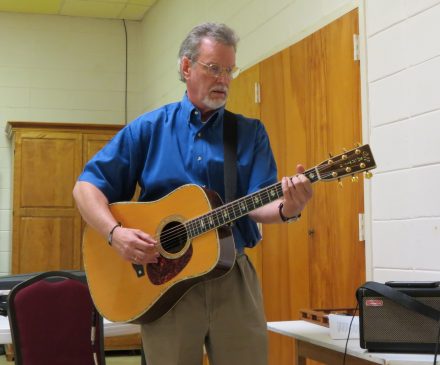Randy Young shares his love of history and music to UDC
Published 9:32 am Friday, November 8, 2024

- PLAYING SOME FAMILIAR TUNES: Randy Young plays"Ashokan Farewell" for the ladies in the UDC. (Submitted Photo)
THOMASVILLE- Randy Young demonstrated the poetic side of music during the 1860’s and the War Between the States era at the chapter meeting of John B. Gordon 383 UDC. He was introduced by Sheila Tucker, President.
“Music captivated our nation long before Miley Cyrus or Justin Timberlake dominated contemporary media,” Young said. “During the War Between the States, bugles, fifes, and drums were used to issue marching orders or booster morale. Singing was encouraged as a way to release tensions.”
Young gave the history of the popular song “Lorena” that was sung and played during the war. It began as poem, written by Reverend Henry Webster, a Presbyterian minister in Zanesville, Ohio. His sweetheart, choir member Ella Blocksom, jilted him. The Reverend met composer Joseph Webster, who turned the poem into lyrics. But, he changed the name to protect Blocksom. The ballad was about a lost love, and was published in 1858 by Higgens Bros. of Chicago. It became such a hit that Confederate soldiers wrote a second set of lyrics, “Paul Vane, or Lorena’s Reply.”
Trending
The name “Lorena” was so popular during this time, that many daughters were named “Lorena.” It was reported that Southern officers banned this ballad because “it inspired homesickness and desertion among the ranks,” shared Young. “Lorena” made soldiers who sang it so homesick that it diminished their will to fight. Young said “One Southern officer blamed the South’s defeat on the mournful ballad.”
Another bit of interesting history about the ballad that Young shared was, “A famous ragtime pianist, Scott Joplin shared the story one night “Lorena” was sung at nearby opposing campfires. The day after, soldiers who had sung to each other the night before, refused to fight each other.”
“The language of the song may sound archaic today- especially lines like this one that moved soldiers nursing their wounds on battlefields far from home: “Our heads will soon lie low, Lorena-Life’s tide is ebbing out so fast,” said Young.
Today, the song still shares strong emotions. The melody has been used in movies from the Searchers in 1956 to Cowboys and Aliens in 2011.
“The Battle Hymn of the Republic” is considered the preeminent Northern war song. But Union soldiers were more likely to say that honor belonged to “The Battle Cry of Freedom.” The composer-lyricist was George F. Root. It was composed quickly in a single day as a response to President Abraham Lincoln’s July 1862 call for 300,000 volunteers to join the Union Army. This song was first performed on July 24 and again on July 26 at a massive war rally. The song was played and sung in the camps, on the march, and even on the battle fields.
The Northern public’s response to “The Battle Cry of Freedom” was popular. The sheet music was published in the fall, as fourteen printing presses worked continuously, not being able to keep up for the demand of copies. Between 500,000 and 700,000 copies were produced.
Trending
Young gave hand-outs of the lyrics for “The Battle Cry of Freedom” of the Southern and Northern versions. Also, the lyrics to the ballad of “Lorena” were included.
The program ended with Young playing a tape of the beautiful music of “Ashokan Farewell.”





